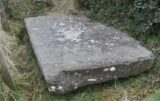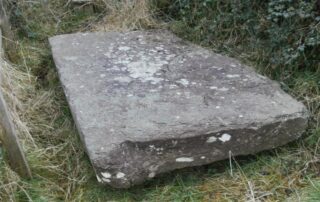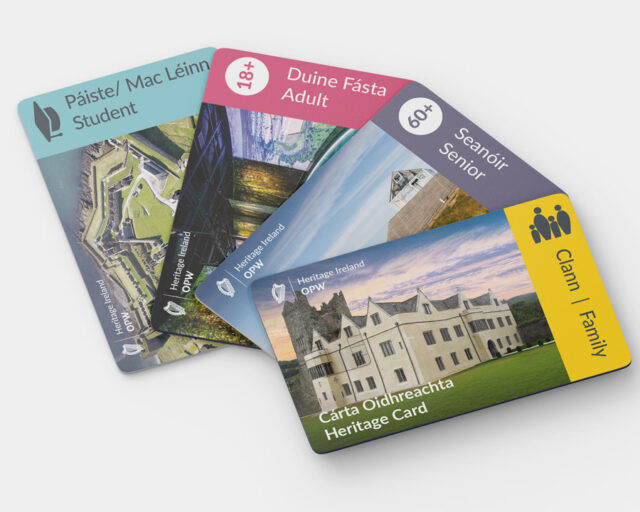Fógra
WARNING: It should be noted that these sites are unguided and a level of care and caution should be maintained during all stages of your visit. The Office Of Public Works (OPW) will not be held responsible for any damages, injuries, or losses that occur
Ballyboodan Ogham Stone
Located near Knocktopher in south Kilkenny, the Ballyboodan Ogham Stone was carved from a piece of slate measuring 2.31m by 1.75m. It has an ogham inscription which is thought to have been carved between 700 and 900 AD.
Ogham is an ancient Irish alphabet, and our earliest written source for the Irish language. The ogham alphabet uses a script made of lines cut on, across, or either side of a central 'stem' line. Ogham inscriptions were usually written vertically and are read from bottom to top. Ogham stones appear to have been erected either as memorials or territorial markers and usually record the name of a person with a standard formula such as: “X son of Y, member of the tribe of Z”. Although the alphabet was designed for the Irish language, a few Latin inscriptions in ogham also survive in Ireland. There are about 400 surviving ogham inscriptions. Approximately 350 of these are in Ireland, with the largest number of ogham stones located in counties Cork, Kerry, and Waterford. Around 50 ogham inscriptions have been discovered in Britain, with ogham stones located in Wales, Scotland, The Isle of Mann, and in Cornwall and western England.
This stone was rediscovered in 1841, though unfortunately damaged by treasure-seekers who knocked it from its original position. In 1850, it was under threat again, this time from a tenant farmer who wanted it removed to allow for crop planting. Its preservation is owed to the intervention of the local landlord, Sir Hercules Richard Langrishe of Knocktopher Abbey, who ensured the stone was saved.
Today, the stone lies flat in a field on the right-hand side of the road, enclosed in a timber-framed structure.
The ogham inscription, although weathered and partially damaged, reads: CORBI KOI MAQI LABRID ("Here is Corb, son of Labraid")
Many of the letters are now worn, and some have been lost where part of the stone has broken away, but the message still gives us a poignant glimpse into the lives of those who walked this land over a millennium ago.
Visit Historic Environment Viewer for more information on Ballyboodan Ogham Stone
Protect our Past - Click here to read about the importance of protecting our country’s unique heritage sites
This national monument is protected in accordance with the National Monuments Acts 1930 to 2014


